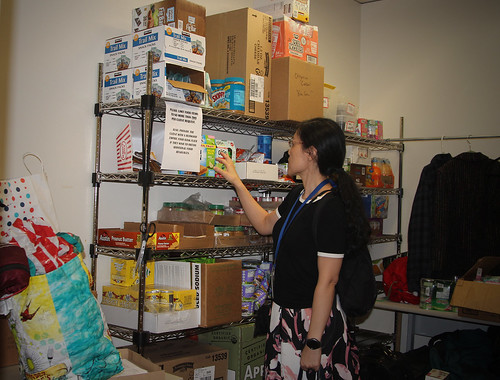
In October 2017, 16 different wildfires throughout Northern California burned over 245,000 acres, destroyed an estimated 8,900 structures, forced 100,000 people to evacuate, and sadly, claimed 43 lives. The USDA Food and Nutrition Service (FNS) took a variety of actions as part of a concerted effort among federal, state and local agencies to provide nutrition assistance relief to those most affected by the wildfires.
Some of these actions involved waivers of the Supplemental Nutrition Assistance Program (SNAP), known as CalFresh in California. On October 17, FNS allowed SNAP participants who had temporarily evacuated to shelters and lacked the ability to store and prepare food to use their SNAP benefits to purchase hot foods and hot food products at authorized SNAP retailers in 13 counties through November 15, 2017. Additionally, FNS allowed California to automatically issue replacement benefits to SNAP participants living in certain areas of six counties that experienced extended power outages. An estimated 5,560 households received replacement benefits equal to 60 percent of their October benefits, worth an estimated $1.3 million.
On October 20, FNS approved California Department of Social Services' (CDSS) request to operate Disaster SNAP (D-SNAP) in seven Northern California counties (Butte, Lake, Mendocino, Napa, Nevada, Sonoma and Yuba Counties). FNS staff visited several locations during California’s first few days of D-SNAP operations to further support this response and provide onsite technical assistance.
I had the opportunity to meet with county partners at two of these D-SNAP application sites. I visited the Napa Local Assistance Center (LAC) operated by the Napa County Health and Human Services Agency (HHSA). I also went to the Sonoma County Human Services Department (HSD).
At the Napa Local Assistance Center, wildfire survivors were able to receive in-person help from multiple agencies, such as the USDA Natural Resources Conservation Service, the Federal Emergency Management Agency, the Small Business Administration, the California Department of Motor Vehicles, Napa Public Health, and the Pacific Gas & Electric Company. Not many of the Napa homes were destroyed, but after the power outages, returning evacuees could benefit from D-SNAP if they experienced financial expenses or losses due to the disaster and were found eligible.
Even though some Sonoma HSD staff had lost their own homes to the wildfires, they provided efficient customer service to D-SNAP applicants. I was also encouraged to see that HSD staff had converted a storage closet into a food pantry, stocked with 500 pounds of food that had been delivered in partnership with the Redwood Empire Food Bank, to provide immediate nutrition relief to applicants. It was heartwarming to see communities, near and far, come together to help survivors.
In total, impacted households in the seven California counties where D-SNAP operated received more than $2.2 million in disaster benefits, which includes benefits for new D-SNAP households and disaster supplemental benefits for ongoing SNAP households.



